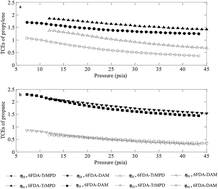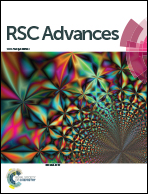Phenomenological modeling and analysis of gas transport in polyimide membranes for propylene/propane separation
Abstract
Olefins and paraffins are the main building blocks for many products in the petrochemical industry. Various research studies have demonstrated the viability of polyimide membranes for high performance olefin/paraffin separation. Further advancements in this field require a thorough understanding of both sorptive and diffusive factors of permeation. This research study presents an extensive analysis on using frame of reference/bulk flow and Maxwell–Stefan models in order to elaborate on the transport and prediction of the performance in the case of propylene/propane separation using polyimide membranes. Sorption data of pure gases are utilized to calculate the sorption level of gases in a binary mixture. The contribution of kinetic and thermodynamic coupling effects (TCE) are assessed using the Maxwell–Stefan approach. Moreover, the dual-mode diffusion coefficients are evaluated and optimized for achieving higher accuracy predictions in the case of a binary gas mixture. The results reveal the significant role of thermodynamic compared to kinetic coupling effects in governing the transport properties. Overall, the Maxwell–Stephan model with the contribution of TCEs offers improved predictions compared to the frame of reference/bulk flow model. The findings highlight the inevitable role of taking into account the prominent interactions of feed components in model development for better prediction of performance and evaluation of the propylene/propane separation unit using polyimide membranes.


 Please wait while we load your content...
Please wait while we load your content...